10 mysterious technology of ancient Egypt, which still does not explain
 Bashny.Net
Bashny.Net
Ancient Egypt, mummies, pyramids - all this is not the first century, dominates the minds of researchers and interested people. The site offers to consider some facts about ancient technology egiptyan.Esli follow the logic of mainstream science, that at the turn of the III millennium BC. e. in Egypt, no reason, no reason at all there was an unexplained technological breakthrough. As if by magic in a very short period of time the Egyptians erected the pyramid and demonstrate unprecedented skill in handling solid materials - granite, diorite, obsidian, quartz ... And all this is before the appearance of iron tools and other technical equipment. Further, the unique skills of the ancient Egyptians as quickly and inexplicably disappear ...
1. The processing quality of the granite sarcophagus is at the limit of modern machine technology.
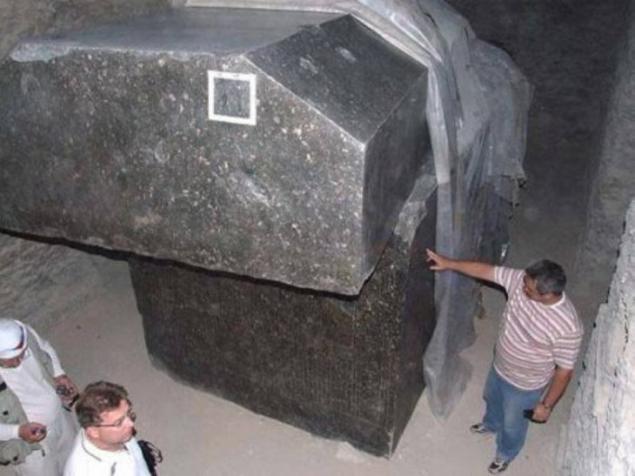
To work with the granite needed only special tools, equipment.
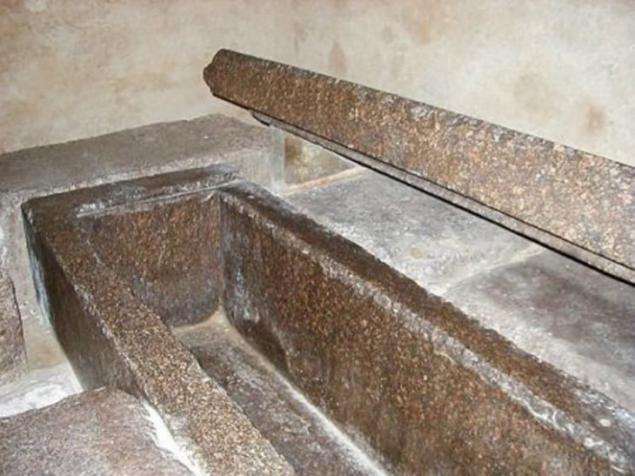
Yes, just bad luck - in those days the Egyptian craftsmen used only stone and copper priladit that diorite - one of the most solid rock - too tough.
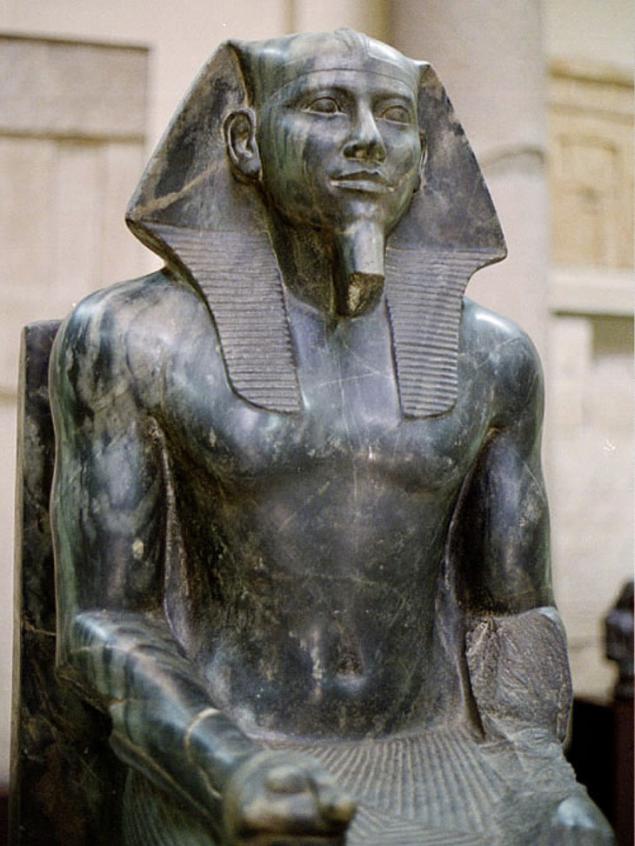
2. Colossi of Memnon on the west bank of the Nile across from Luxor. They are made of heavy-duty quartzite, reach a height of 18 meters and a weight of each statue is 750 tons. In addition, they are based on a quartzite pedestal 500 tons!
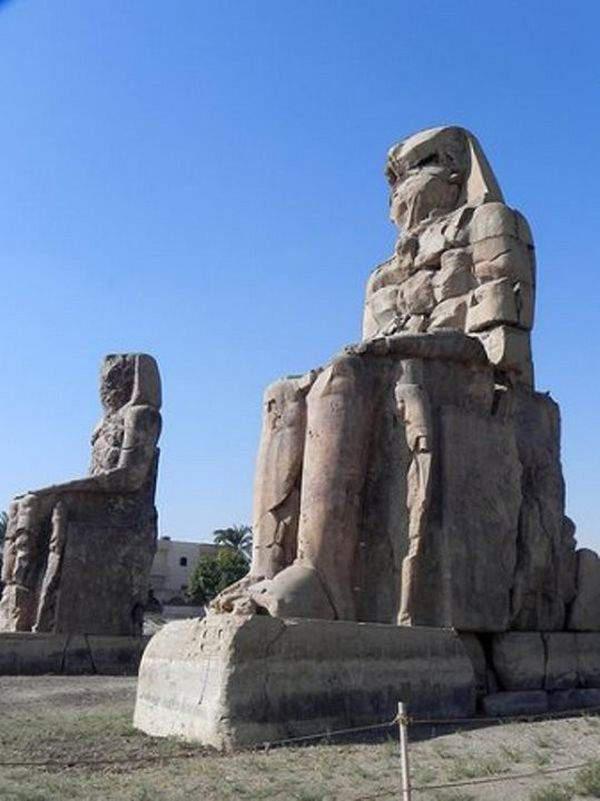
3. But they are nothing compared to the rubble of a giant statue, resting in the courtyard of the church memorial Ramses II. Made from a single piece of pink granite statue reaches a height of 19 meters and weighed about 1000 tons! Monstrous statues and the highest quality of workmanship is absolutely not fit into the known technological possibilities of Egypt.

While the temple itself is consistent with the technical standards of the time: the statues and temple structures are created mostly of soft limestone and construction delights do not shine.

4. The statue, carved from a single piece of black diorite. The Egyptian Museum.
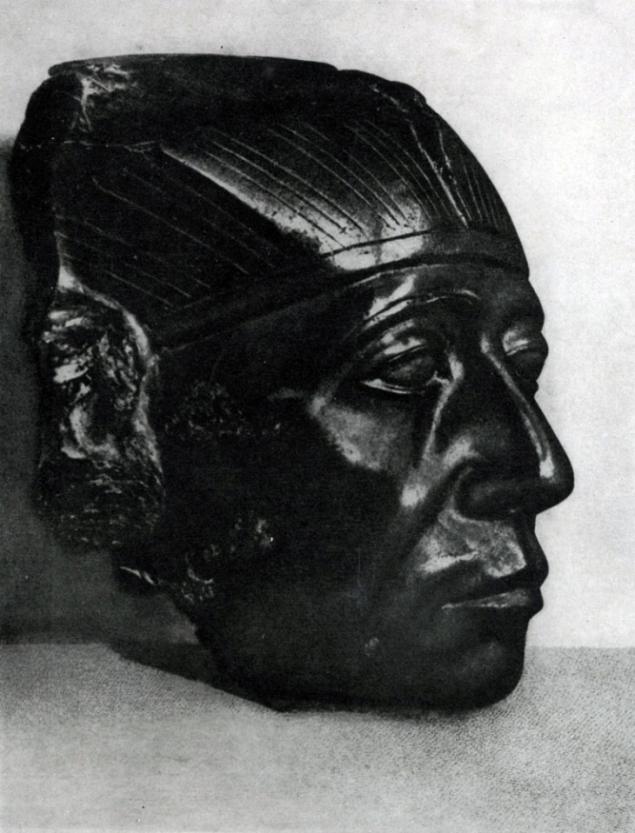
5. Inserts made of rock crystal - the thought of turning and grinding machines come themselves!

Like the eyes of a living person they change hue depending on the angle of illumination and even mimic the capillary structure of the retina!
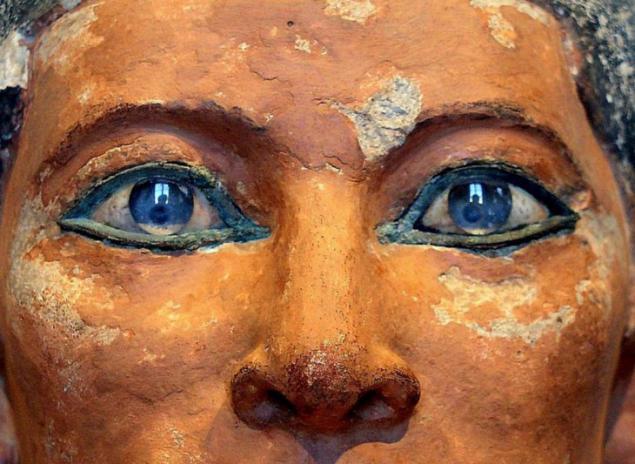
The peak of excellence in the treatment of lenses was in Egypt around 2500 BC. e. Further, the technology for some reason no longer used and forgotten altogether.
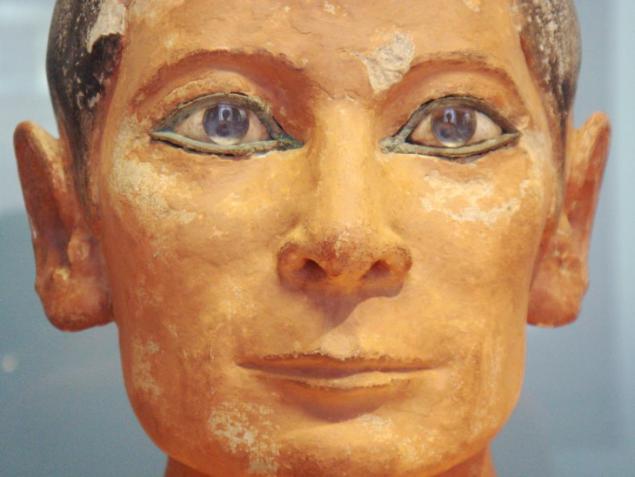
6. Most of the giant granite blocks harvested in the northern quarry near the modern city of Aswan. The blocks extracted from the rock massif. It is interesting to read, how did this happen?
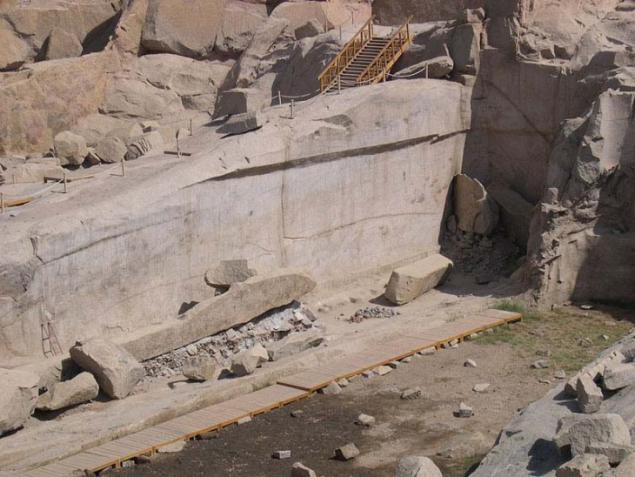
Around the next block was made groove with a very smooth wall.

Moreover, the top of the workpiece and a plane next to the block aligned unknown tool, smooth leaves, repeating recess.
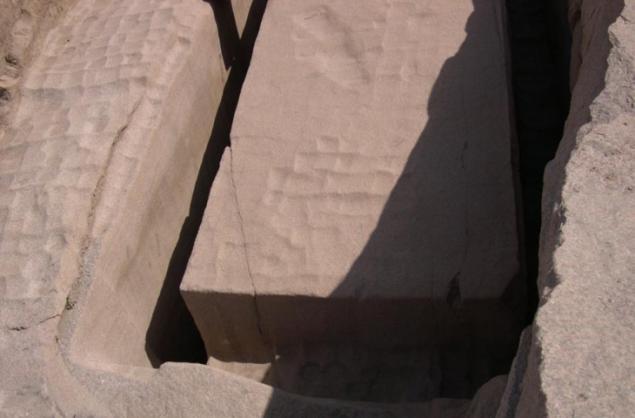
Such recess and left the tool at the bottom of the ditch or groove around the blank block.
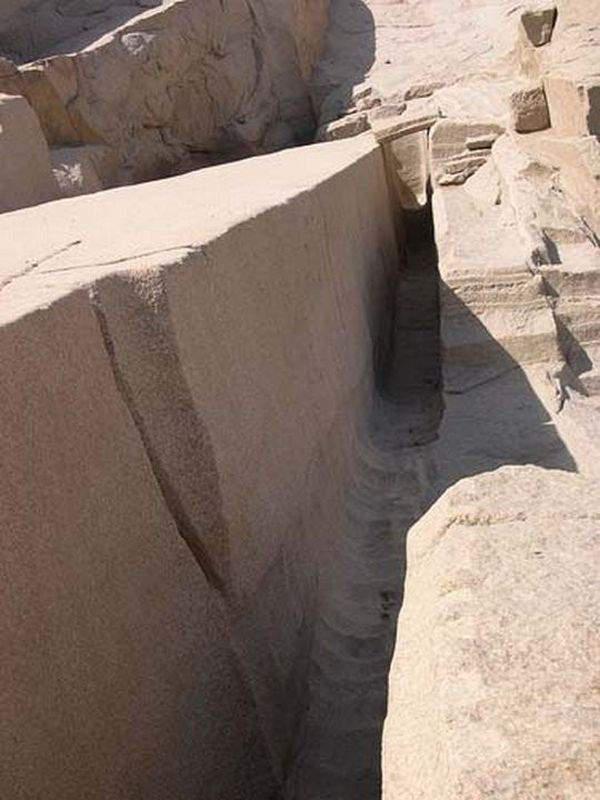
Also, there are many flat and deep hole in the workpiece and the array of granite around it.
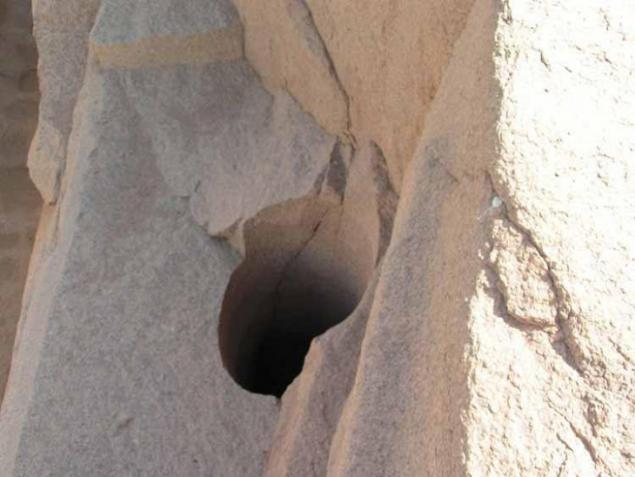
In all four corners of the groove parts evenly and gently rounded radially.
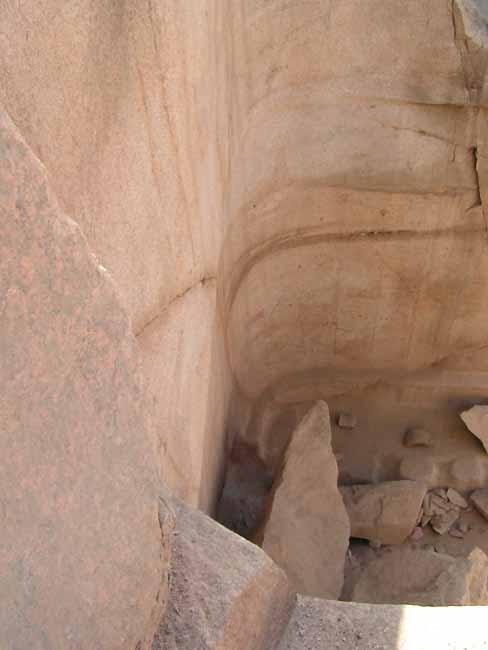
Procurement unit in full size. It is impossible to imagine the technology with which the block can be removed from the array.
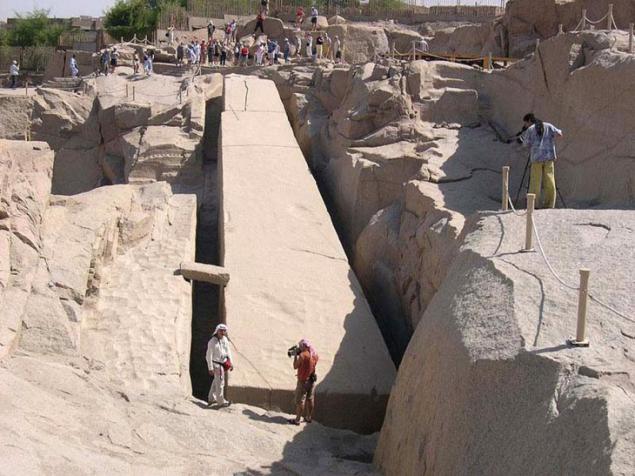
Hole in cross section. Pyramid Userkaf.
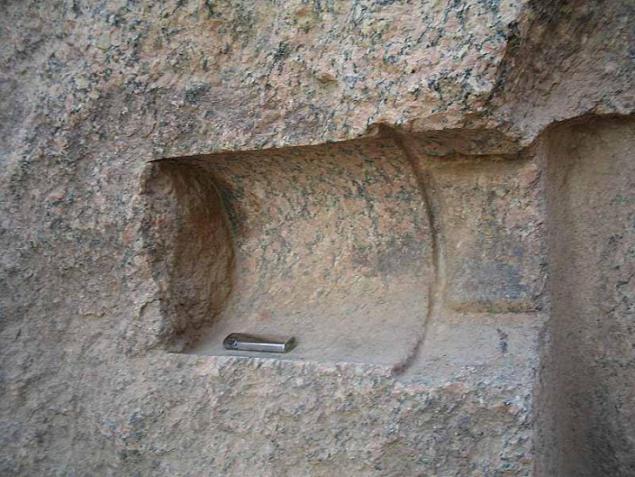
Another view. How can you do it - it is not clear!
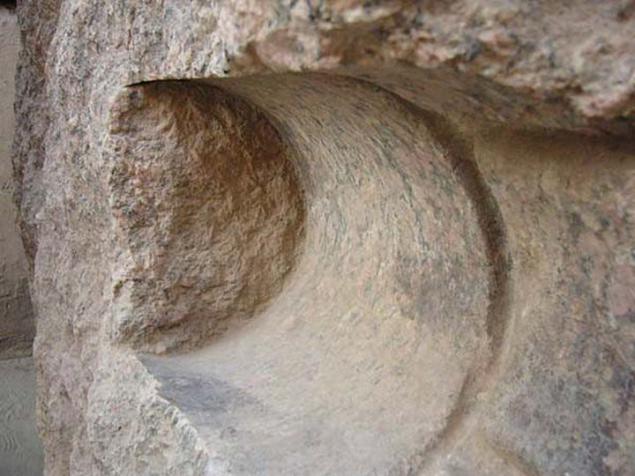
Temple Sahour. Opening with uniformly recurring thread.
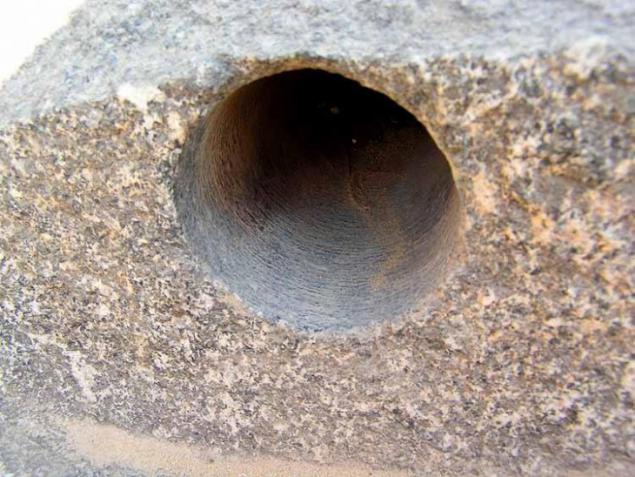
It seems that the work here is the machine.
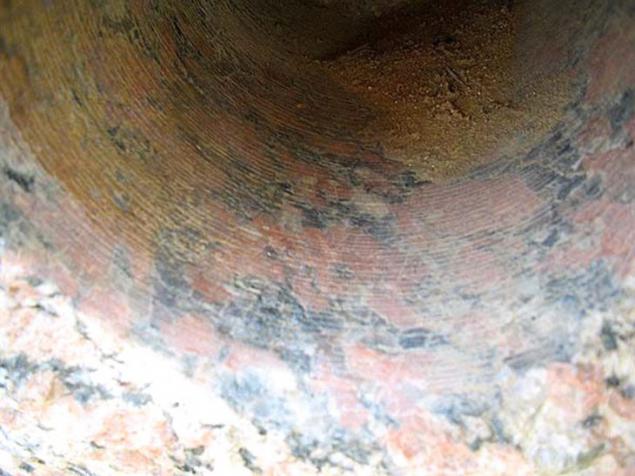
Any artifacts testifying to the methods of processing, no.
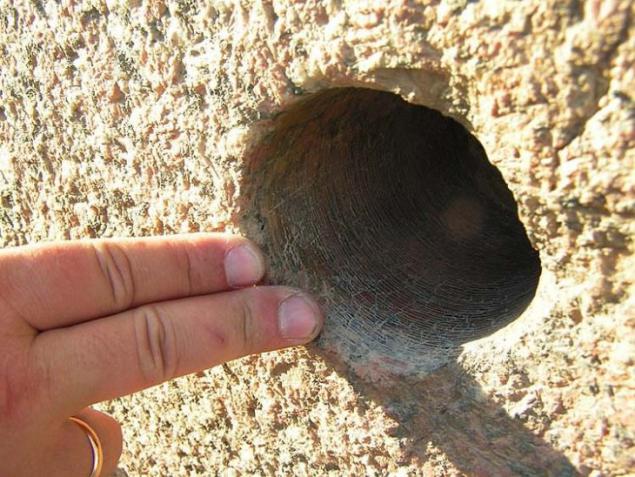
7. Pyramid Dzhedkara. Paul basalt.
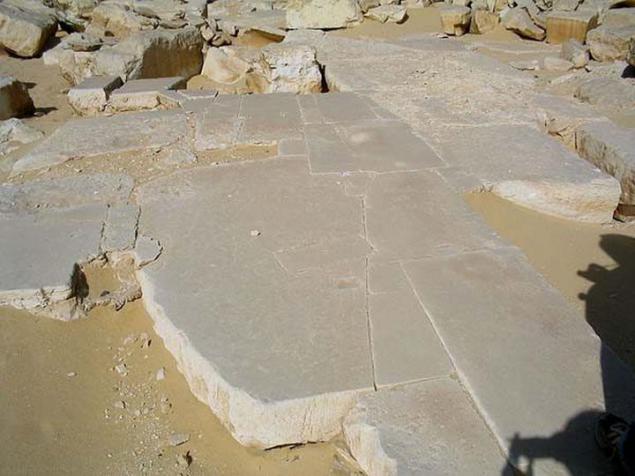
Lined floor of basalt, the technology is not known, as well, and appliances. Note the right rim. Perhaps the tool has not been brought to the edge of an unknown reason.

Basalt is heavy, even heavier than granite and stronger than him.

8. Pyramid of Menkaure. The wall is lined unknown tool.
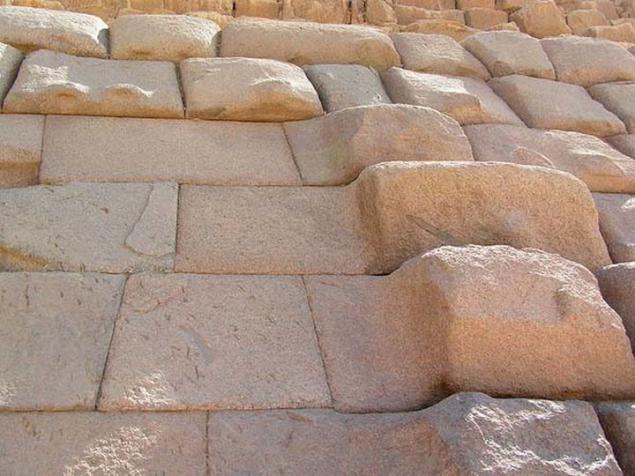
Pyramid of Menkaure. Another fragment of the wall. Perhaps the alignment process is not completed.
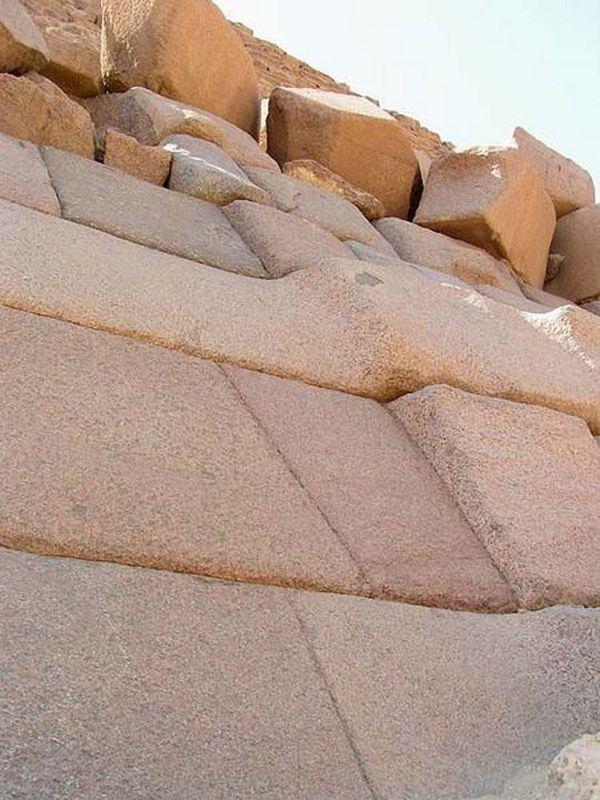
9. Temple of Hatshepsut. Profiled facade detail. Good quality machining, sampling the groove could be made rotating copper disc with the addition of corundum powder and water supply.
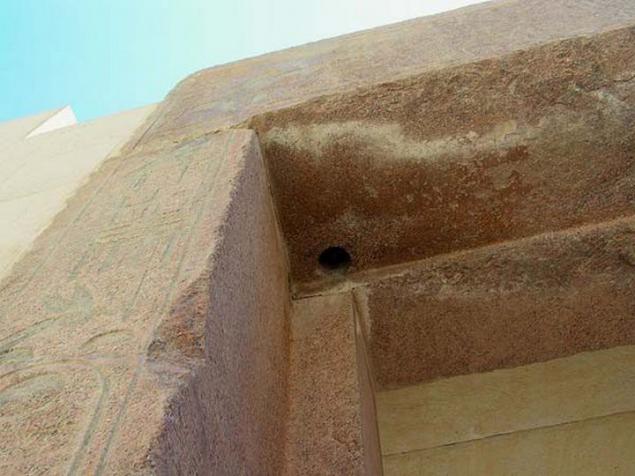
10. Mastaba Ptahshepsesa. Power spikes. Quality grinding faces high enough, spikes, probably is a constructive element.
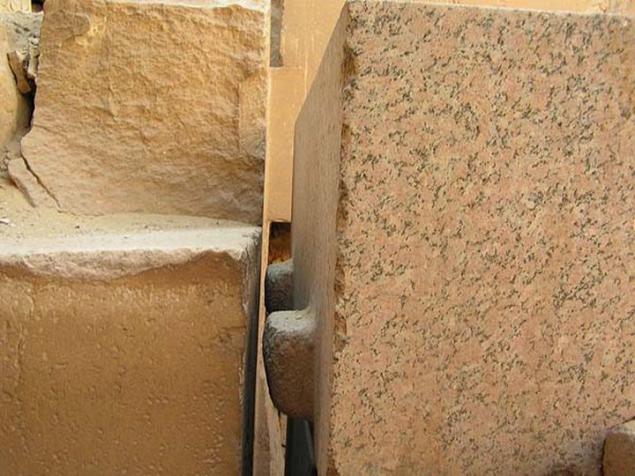
via vmirechudes.com/10-zagadochnyx-texnologij-drevnego-egipta-kotorym-do-six-por-net-obyasneniya/
1. The processing quality of the granite sarcophagus is at the limit of modern machine technology.

To work with the granite needed only special tools, equipment.

Yes, just bad luck - in those days the Egyptian craftsmen used only stone and copper priladit that diorite - one of the most solid rock - too tough.

2. Colossi of Memnon on the west bank of the Nile across from Luxor. They are made of heavy-duty quartzite, reach a height of 18 meters and a weight of each statue is 750 tons. In addition, they are based on a quartzite pedestal 500 tons!

3. But they are nothing compared to the rubble of a giant statue, resting in the courtyard of the church memorial Ramses II. Made from a single piece of pink granite statue reaches a height of 19 meters and weighed about 1000 tons! Monstrous statues and the highest quality of workmanship is absolutely not fit into the known technological possibilities of Egypt.

While the temple itself is consistent with the technical standards of the time: the statues and temple structures are created mostly of soft limestone and construction delights do not shine.

4. The statue, carved from a single piece of black diorite. The Egyptian Museum.

5. Inserts made of rock crystal - the thought of turning and grinding machines come themselves!

Like the eyes of a living person they change hue depending on the angle of illumination and even mimic the capillary structure of the retina!

The peak of excellence in the treatment of lenses was in Egypt around 2500 BC. e. Further, the technology for some reason no longer used and forgotten altogether.

6. Most of the giant granite blocks harvested in the northern quarry near the modern city of Aswan. The blocks extracted from the rock massif. It is interesting to read, how did this happen?

Around the next block was made groove with a very smooth wall.

Moreover, the top of the workpiece and a plane next to the block aligned unknown tool, smooth leaves, repeating recess.

Such recess and left the tool at the bottom of the ditch or groove around the blank block.

Also, there are many flat and deep hole in the workpiece and the array of granite around it.

In all four corners of the groove parts evenly and gently rounded radially.

Procurement unit in full size. It is impossible to imagine the technology with which the block can be removed from the array.

Hole in cross section. Pyramid Userkaf.

Another view. How can you do it - it is not clear!

Temple Sahour. Opening with uniformly recurring thread.

It seems that the work here is the machine.

Any artifacts testifying to the methods of processing, no.

7. Pyramid Dzhedkara. Paul basalt.

Lined floor of basalt, the technology is not known, as well, and appliances. Note the right rim. Perhaps the tool has not been brought to the edge of an unknown reason.

Basalt is heavy, even heavier than granite and stronger than him.

8. Pyramid of Menkaure. The wall is lined unknown tool.

Pyramid of Menkaure. Another fragment of the wall. Perhaps the alignment process is not completed.

9. Temple of Hatshepsut. Profiled facade detail. Good quality machining, sampling the groove could be made rotating copper disc with the addition of corundum powder and water supply.

10. Mastaba Ptahshepsesa. Power spikes. Quality grinding faces high enough, spikes, probably is a constructive element.

via vmirechudes.com/10-zagadochnyx-texnologij-drevnego-egipta-kotorym-do-six-por-net-obyasneniya/
Tags
See also
10 historical mysteries that we can not solve so far
Mysterious discovery, the origin of which is still unknown (17 photos)
7 historical mysteries, which are all still scratching their heads
6 historical finds, are still not solved
10 Mystery of historical finds, which is still not solved
10 ancient wonders that still remain a mystery
World secrets, over which still puzzled scientists
5 mysterious people whose identity is not established so far
Mystical history, which has not yet been found
15 amazing mysteries of the cosmos, which are still not allowed to sleep scientist. Incredible!

















